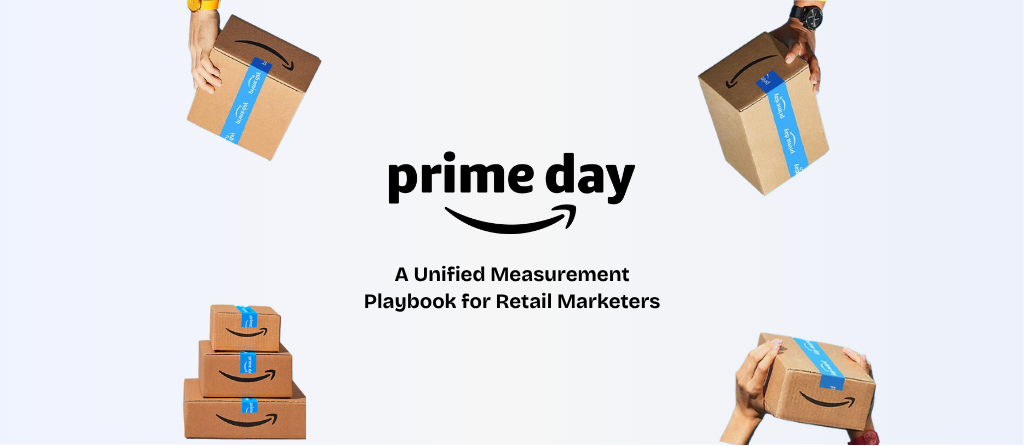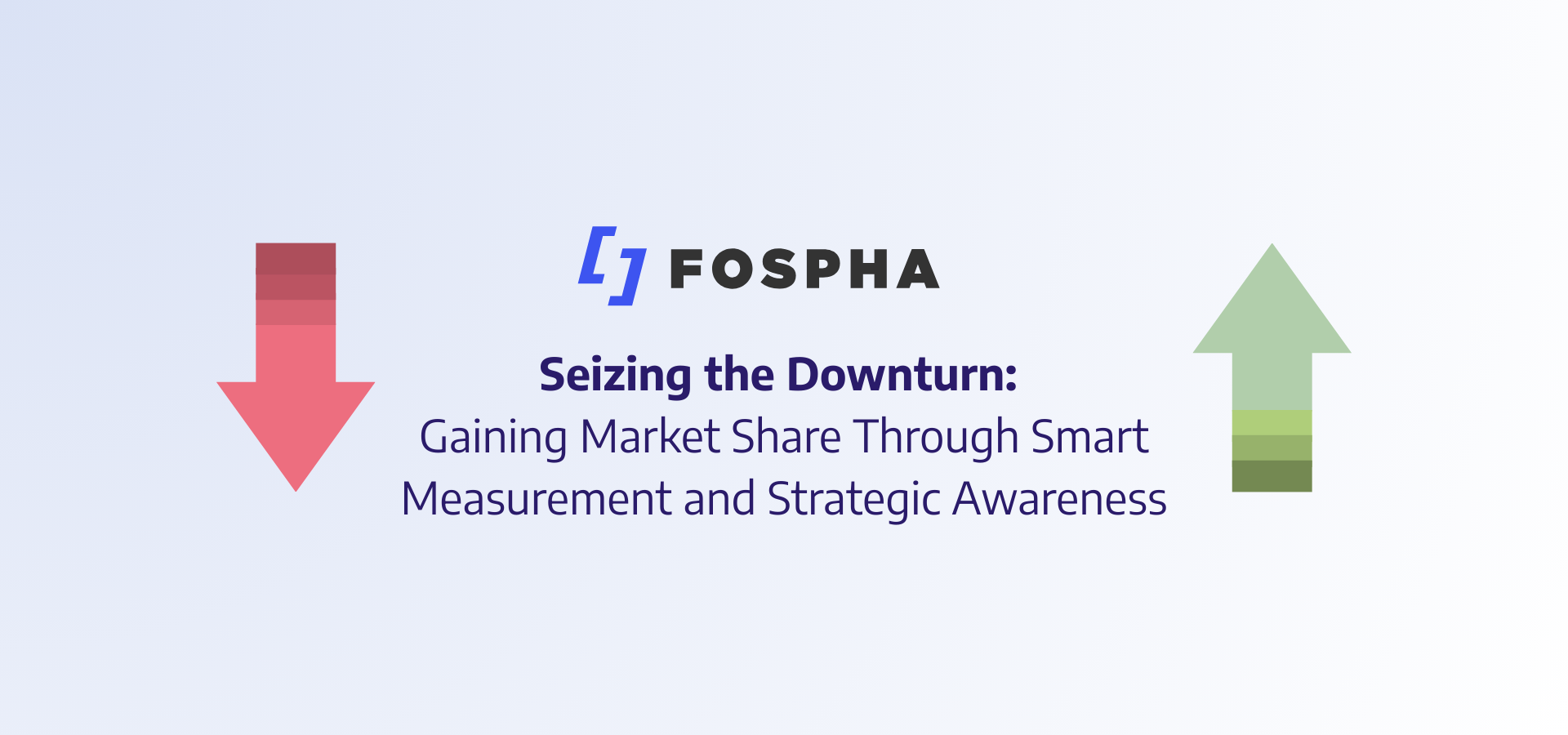Lots of trends and predictions articles are landing at this time, focused on macro themes and broad technological developments. One of the things we hear a lot from clients is that it’s difficult for marketers to immediately embrace new things because they won’t realize any of the benefit in-year, which is the overwhelming focus of their attention now, during these final stages of budget-setting/adjustments.
Our perspectives on the topic of market trend analysis and predictions are shaped by our experiences building independent marketing measurement software and the experiences we share with our clients, across industries and of all sizes and age, with the common goal of trying to solve one of the biggest problems their organizations have: understanding how their marketing activities are contributing to acquiring and retaining customers at a sustainably low cost.
We have made it our mission to disrupt the traditionally slow and expensive attribution software market (another of those technology developments that historically hasn’t delivered in-year value), so in line with this, the focus of the below is on deeply practical opportunities and trends we’re observing and predicting, implementation of which will lead to measurable value in 2020.
Brands Taking Control Through 1st Party Data
The implications of GDPR have started to manifest this year, as well as adoption of the legislation as the de facto global standard (foreshadowing the effects of CCPA, which comes into effect on January 1st 2020). Whilst there has certainly been disruption, with Intelligent Tracking Prevention (ITP), changes in user-level data sharing from Google and Facebook taking hold and fines starting to roll out from the ICO, the changes have also created clarity from the initial confusion in mid-2018, with GDPR having become the forcing mechanism for brands to up their game on data protection and focus on the data they do have, but most still aren’t taking full advantage of. With this, we’re observing a wholesale shift towards focus on 1st party data strategy (see S4 Capital’s ‘Holy Trinity’).
There are countless examples throughout 2019 of the significance to clients of making progress leveraging their 1st party data. One particularly powerful example we observed was with a client who had invested heavily into developing a state-of-the-art integrated CRM system but only collected data from the point a customer converts and still relied on data from Google Analytics and their ad platforms for any pre-conversion data on their customers and their journeys.
This incomplete view of the customer and reliance on the businesses that sell them ads to measure performance and tell them when to stop spending (which they won’t do) led to them building up a dependency on Paid Search, wasting tens of thousands of dollars a month on activity that was driving negative ROI/zero sales. By joining their cross-channel customer journey data, they’ve been able to identify these savings and create a new source of 1st party data, valuable IP and competitive advantage.
Developing these top-of-the-funnel datasets, independent of the ad platforms, is the fundamental enabler for marketers to progress from paid media-centric to customer-centric decision-making. The fastest-growing and most disruptive brands are doing exactly this, e.g. Allbirds a brand growing at a faster rate than Nike in 2019 and whose CMO attributes ‘a big part of (their) success to access to clean, robust customer data’.
Differentiated Acquisition vs Retention Strategy
Another significant advantage developed by these top of the funnel 1st party data sets is a joined-up view of the customer journey from acquisition to retention and a differentiated marketing strategy for each that enables organizations to start driving up the lifetime value of their customers. Without them, so often we see brands falling into the trap of a marketing strategy geared towards constantly acquiring and reacquiring customers through paid media. It’s hugely inefficient, never more so than with the missed opportunities we see in email. There is still so much headroom in this channel that can be unlocked through getting to grips with 1st party customer journey data and optimizing the number of sends, time of day and content. It might not be fashionable but it’s still one of the quickest and easiest levers for marketers to pull and make a big difference with customer retention and lifetime value in 2020.
Cost-neutral Growth
With global economic uncertainty looming, many marketers are faced with growth targets on flat or reduced marketing budgets in 2020. In-housing will continue to remain a hot topic as a means of increasing efficiency, but the reality is that the majority of changes marketers make lead to at least short-term incremental effort and cost. The best approach to doing something different without breaking the bank that we’ve observed is where marketers deploy data consolidation and automation to unlock budget and time saving.
We hope that 2020 is the year when marketers’ time is properly measured in terms of ROI. We consistently still see marketing teams spending more than 50% of their time manually hashing data sets together for the purposes of analysis or data activation. One client was able to save 500 days of analyst time in 2019 by overcoming this through automated data connectivity, time they have redeployed into more strategic tasks, using the data to make decisions faster, without extra cost.
Efficiency in paid media spend will remain high on the agenda in 2020. In December, at the Morgan Stanley Global Consumer & Retail Conference, Marc Pritchard, Chief Brand Officer at P&G weighed in on the topic: “Even after saving $1 billion in the past five years, we still see a long runway in a number of areas’, with one of the biggest being ‘the enormous amount of waste in media’. A particular inefficiency he calls out is the number of times consumers are bombarded by the same ad and P&G are ‘really working on driving that out, taking the excess frequency out and reinvesting it into more reach’, as part of a move from ‘wasteful mass marketing to precision one-to-one brand building on a mass scale’.
Consistent with the theme of brands looking to take back control, organizations like P&G are recognizing that they cannot rely on the ad platforms to tell them when they are spending inefficiently and are developing an independent view across all channels to drive the cost saving.
More Diversified Channel Strategy
The Direct-To-Consumer (DTC) boom has been well-documented in 2019, with Shopify hitting one million customers in Q4. Platforms like Shopify enable businesses to establish an online shop quicker and cheaper than ever before but the surge in online businesses means an increase in demand for the same customers from Google and Facebook, which is driving up acquisition costs. An interesting marketing trend analysis we’ve observed with the brands dealing with this the best is that they are avoiding a dependency on one or two channels (particularly Google and Facebook) in the way that many, more mature, businesses have. Mark Pritchard at P&G talks about their efforts reinvesting budget savings from paid media in developing content and film, pushing themselves creatively in the age of streaming. When all the budget isn’t tied up in one or two channels, we’ve seen clients doing great things that would have historically appeared outside their budget constraints, in TV, Out of Home, Podcasts, Voice Search and more.
Key to being able to execute a diverse channel strategy is getting precise with cross-channel Cost Per Acquisition (CPA). When ad platforms use attribution models that assign 100% credit to themselves for conversions they are only partially responsible for, marketers get such incorrect CPA calculations that they find it difficult to justify doing new things that will contribute to the cross-channel complexity. For many, working these out independently is a mammoth task that historically hasn’t been achievable in the time needed to make decisions on budgets. However, in order to embrace new and emerging channels, it’s becoming a requirement and the brands that are winning are the ones developing an independent cross-channel view of CPAs, so they can quickly distribute budgets proportionately. This is a key market trend analysis for 2020.
Different Agency Approaches
Finally, one of the best descriptions we heard in 2019 describing agency problems was that ‘everyone was trying to just not lose’. Market trend analysis shows that the problems with legacy models are well documented, Mckinsey summarizing some of the key ones last year when they wrote about agencies ‘often not disclosing or passing along to their clients rebates they receive from media companies and typically sharing only the data generated by the ad tech platforms, which may not provide an optimal view for clients. They are also sometimes in charge of parts of a client’s tech stack, even though advertisers can achieve more data transparency and greater control by running the stack in-house’.
We’ve seen plenty of encouraging signs from independent agencies that they are changing things, building differentiated business models, driven by the achievement of strategic goals as well as encouraging their clients to develop independent, transparent customer data sets to power faster and better decision-making to give them an edge in media planning. We are hopeful these are positive developments in the market trend analysis.
Wishing everyone a Happy New Year, fun and luck in 2020.
If you’d like to discuss any of the topics above, share perspectives or find out more about how we help clients, we’d love to hear from you here or email tellmemore@fospha.com.
Sam Carter is the CEO of Fospha, the independent marketing measurement & attribution platform, helping businesses optimize customer acquisition and retention on the next $100k of budget.


